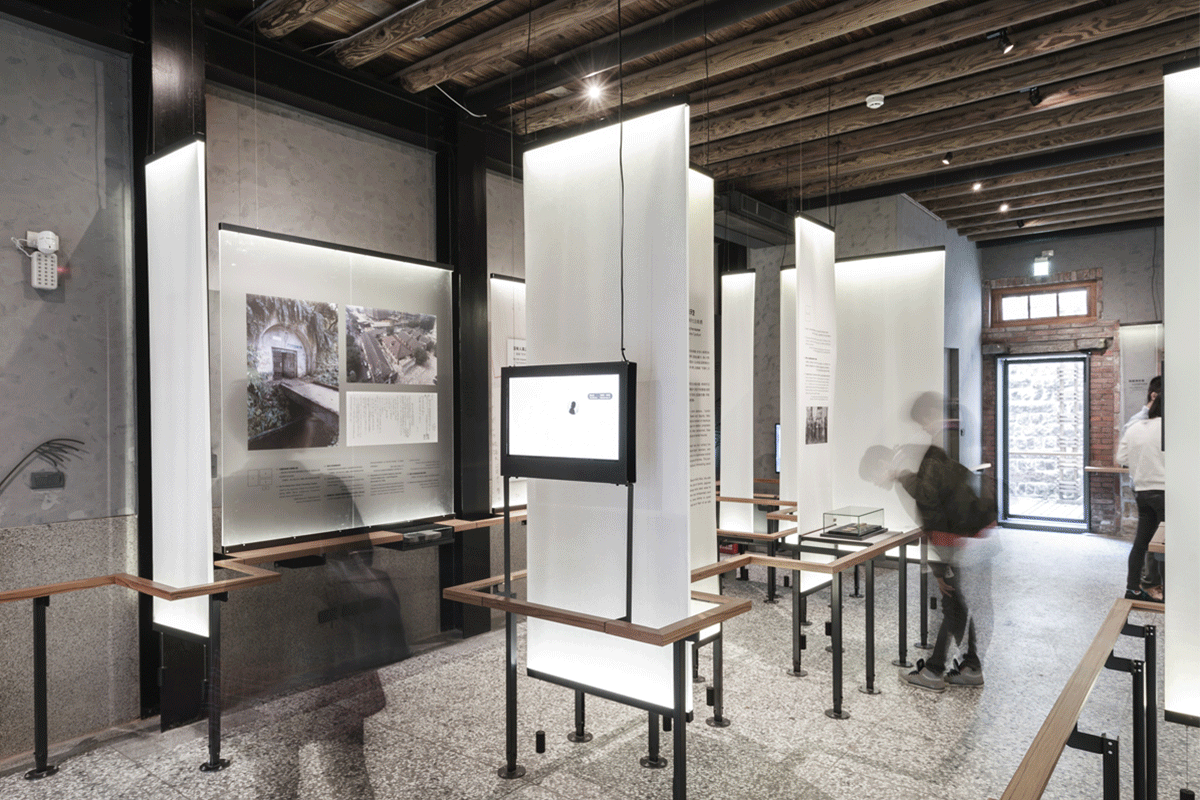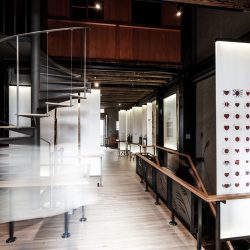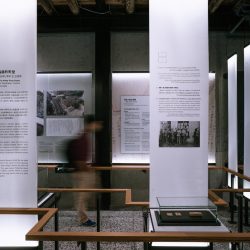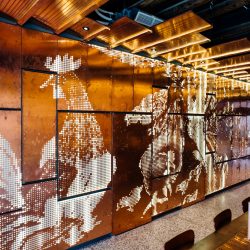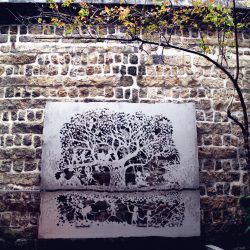A NEWLY OPENED MUSEUM IN TAIPEI PORTRAYS THE LIFE AND TEARS OF “COMFORT WOMEN” DURING WWII
In the middle of the cultural district of old town Da Dao Cheng in Taipei where local establishments selling tea leaves, Chinese herbs, dried fruits and original cuisine are omnipresent, an over a century-old building has been renovated and dedicates its existence to the historical stigma caused by sexual abuse. The building is called Ama Museum.
Ama, the word used to refer to ‘grandmothers’ is given a new context to glorify the bravery of the comfort women, a group of Taiwanese females who were forced into sexual slavery by the Japanese military during the Second World War. Historians believe that there were over two thousand comfort women who went through the predicament.

From the entrance, one can see Ama Café whose visually distinctive walls are cladded with copper sheets of exquisite patterns and feature the presence of windows of multiple sizes. Behind these windows are the stories of ‘ama’ and their experiences as the comfort women. The true highlight of the museum is the space behind the brick wall that can be seen at the farthest end of the room. Ama Museum is brought to life by funds that were raised both inside and outside of Taiwan with TWRF (Taipei Women’s Rescue Foundation) being the initiator of the project. The museum officially opened on 2016’s International Human Rights Day (10th December) and it serves as documentation of this stigma in the world’s history told by the stories of the com- fort women and the remaining evidence ranging from news images and photographs to memorabilia such as condoms, videos of recorded interviews, and works of art by female artists from different Asian countries including artistic creations from the hearts and minds of the living ‘amas.’ The exhibition is an appalling revelation to many with some seeing it with tears in their eyes.
Many countries in Asia such as China, South Korea and the Philippines have urged the Japanese government to issue an ‘official apology’ over the comfort women controversy. Taiwan is no different. The museum intends to serve as a representation of the voices and immeasurable pain and sorrow of the victims as well as the nation’s stand on human rights and sexual equality.
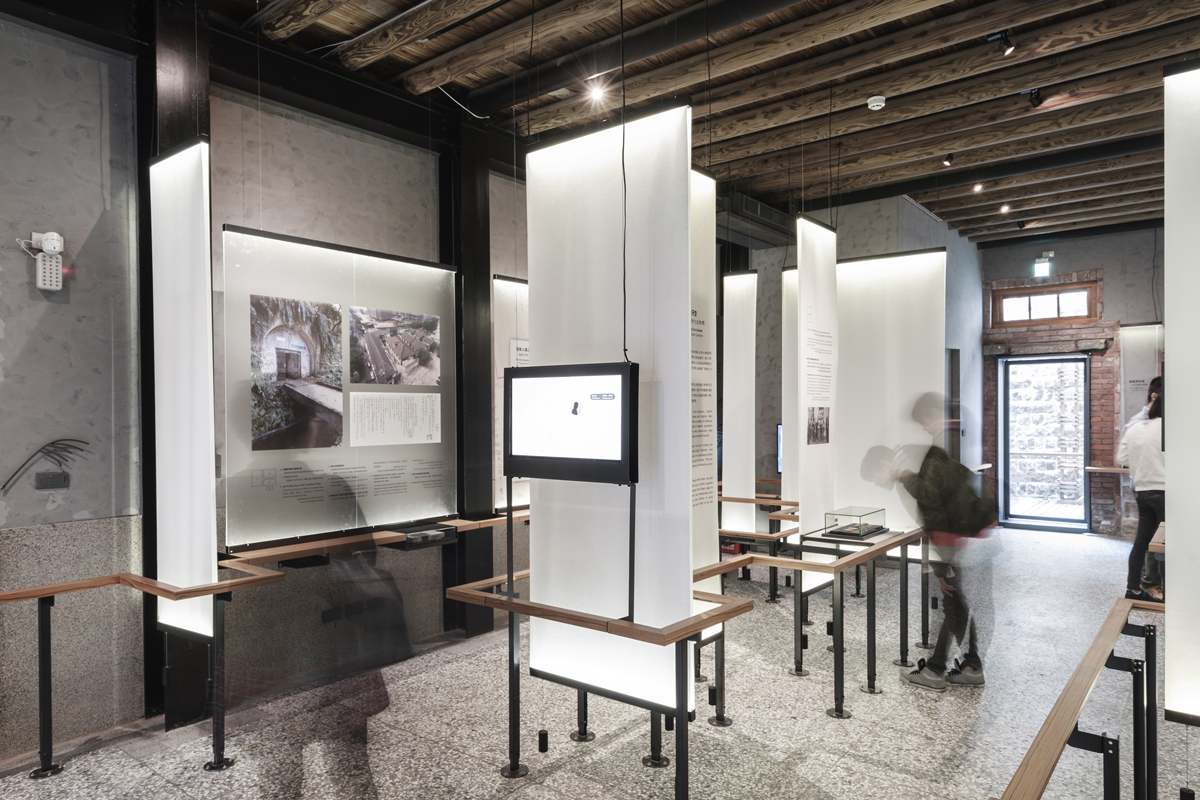
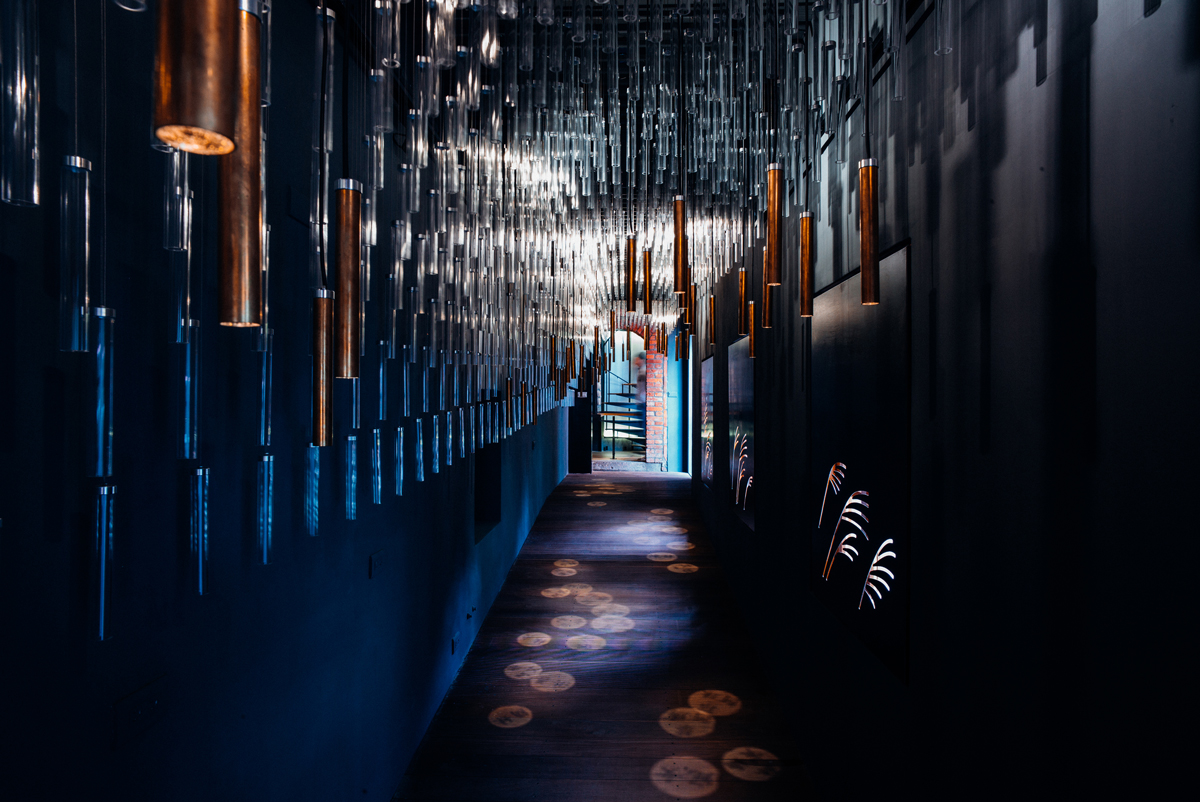
One portion of the space on the second floor of the museum is a narrow walkway with 59 light golden cylinders containing lamps hung among a cluster of over one thousand illuminated light sticks (59 is the number of comfort women who have been officially recorded). Once we put our hands under a cylinder, a name of an ‘ama’ appears on our palms as if we were asked to accept and remember the tragedy in our memory.
But sorrow is not the only thing this museum has to offer. The power and ability to attain equal rights is what Ama Museum has written down on another page of Taiwan’s history – tears for those with no voice.


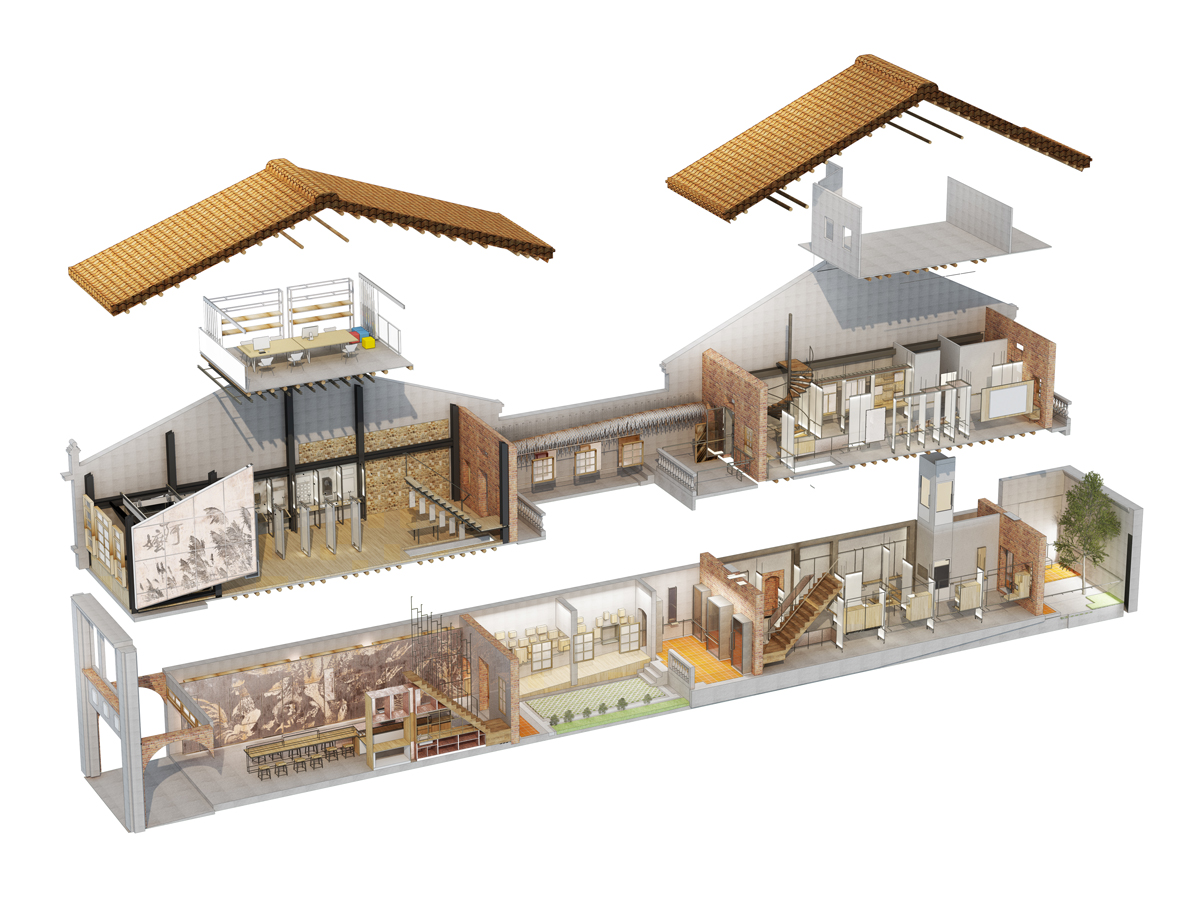
ท่ามกลางแหล่งวัฒนธรรมในเขตเมืองเก่า Da Dao Cheng ของไทเป นอกจากจะเต็มไปด้วยร้านชา ยาจีน ผลไม้แห้ง และร้านอาหารระดับต้นตํารับ ยังมีอาคารเก่าอายุร่วมร้อยปีแห่งหนึ่งท่ีได้รับการบูรณะเพื่ออุทิศให้กับการเยียวยาบาดแผลทางประวัติศาสตร์ที่เกิดจากการกดขี่ทางเพศ ช่ือว่า Ama Museum
Ama หรือ อาม่า ท่ีเราคุ้นหูในความหมายถึงย่าหรือยาย ถูกใช้ในบริบทใหม่เพื่อยกย่องความกล้าหาญของ Comfort Women กลุ่มหญิงสาวชาวไต้หวันที่ถูกบังคับกดขี่ให้เป็นแรงงานทางเพศของทหารญี่ปุ่นในสมัยสงครามโลกครั้งที่สองที่นักประวัติศาสตร์เชื่อว่าอาจมีมากถึงสองพันคน
จากหน้าประตูจะมองเห็น Ama Cafe ที่เด่นสะดุดตาด้วยผนังทั้งสองด้านที่กรุแผ่นทองแดงฉลุลาย แบ่งเป็นช่องหน้าต่างหลายขนาด สามารถเปิดดูเรื่องราวของ “อาม่า” ที่อยู่ด้านหลัง แต่ไฮไลท์จริงๆ คือส่วนของพิพิธภัณฑ์หลังประตูอิฐโค้งที่มองเห็นอยู่ปลายสุดของห้อง Ama Museum เกิดขึ้นจากการระดมทุนทั้งในไต้หวันและต่างประเทศ โดยมีกลุ่ม TWRF (Taipei Women’s Rescue Foundation) เป็นผู้ริเริ่ม และเปิดอย่างเป็นทางการเมื่อ Human Rights Day (10 ธันวาคม) ในปี 2559 โดยเปรียบเสมือนเป็นบันทึกเรื่องราวบาดแผลทางประวัติศาสตร์ของ Comfort Woman เล่าเรื่องผ่านภาพข่าว ภาพถ่าย วัตถุที่ยังหลงเหลือ เช่น ถุงยางอนามัย วิดีโอสัมภาษณ์ ผลงานศิลปะของศิลปินหญิงจากหลายประเทศในเอเชีย รวมทั้งผลงานศิลปะสะท้อนความรู้สึกจากฝีมือของ “อาม่า” ที่ยังมีชีวิตอยู่ ซึ่งหลายคนเดินดูด้วยความตกใจกับเรื่องราวที่เพิ่งได้รู้ และหลายคนเดินดูทั้งน้ำตา
หลายประเทศในเอเชีย เช่น จีน เกาหลี ฟิลิปปินส์ ต่างเรียกร้องการแสดงความเสียใจอย่างเป็นทางการในกรณี Comfort Woman จากรัฐบาลญี่ปุ่น ไม่ต่างจากไต้หวันที่ตั้งใจให้พิพิธภัณฑ์แห่งนี้เป็นตัวแทนเสียงจากหยดน้ำตาของผู้สูญเสีย และยังเป็นการแสดงเจตนารมณ์ในเรื่องสิทธิมนุษยชน และความเท่าเทียมกันทางเพศ
พื้นที่ส่วนหนึ่งบนชั้น 2 ของพิพิธภัณฑ์เป็นทางเดินแคบๆ ที่มีแท่งไฟ 59 แท่ง แขวนปะปนอยู่ท่ามกลางแท่งเรืองแสงที่ห้อยลงมาจากเพดานกว่าพันแท่ง แท่งไฟทั้ง 59 คือจำนวน Comfort Woman ที่ได้รับการบันทึกอย่างเป็นทางการ และเมื่อยกมือของเราไปรองที่ใต้แท่งไฟนั้น ก็จะปรากฏชื่อของ “อาม่า” แต่ละคนส่องลงมาในอุ้งมือของเรา เหมือนตั้งใจให้เราโอบรับเรื่องราวน่าเศร้านี้ไว้ในความทรงจำ
แต่ความเศร้าไม่ได้เป็นสิ่งเดียวที่พิพิธภัณฑ์แห่งนี้มอบให้ พลังของการเรียกร้องสิทธิและความเท่าเทียมกันต่างหาก ที่ Ama Museum ได้บันทึกลงในอีกหน้าประวัติศาสตร์ของไต้หวัน — Tears for those with no voice
TEXT : SANTISUK KUSAKULSOMSAKDI
PHOTO COURTESY OF WHOLE + DESIGN ARCHITECTS & PLANNERS AND AMA MUSEUM
fb.com/taiwanahma
twrf.org.tw/amamuseum

